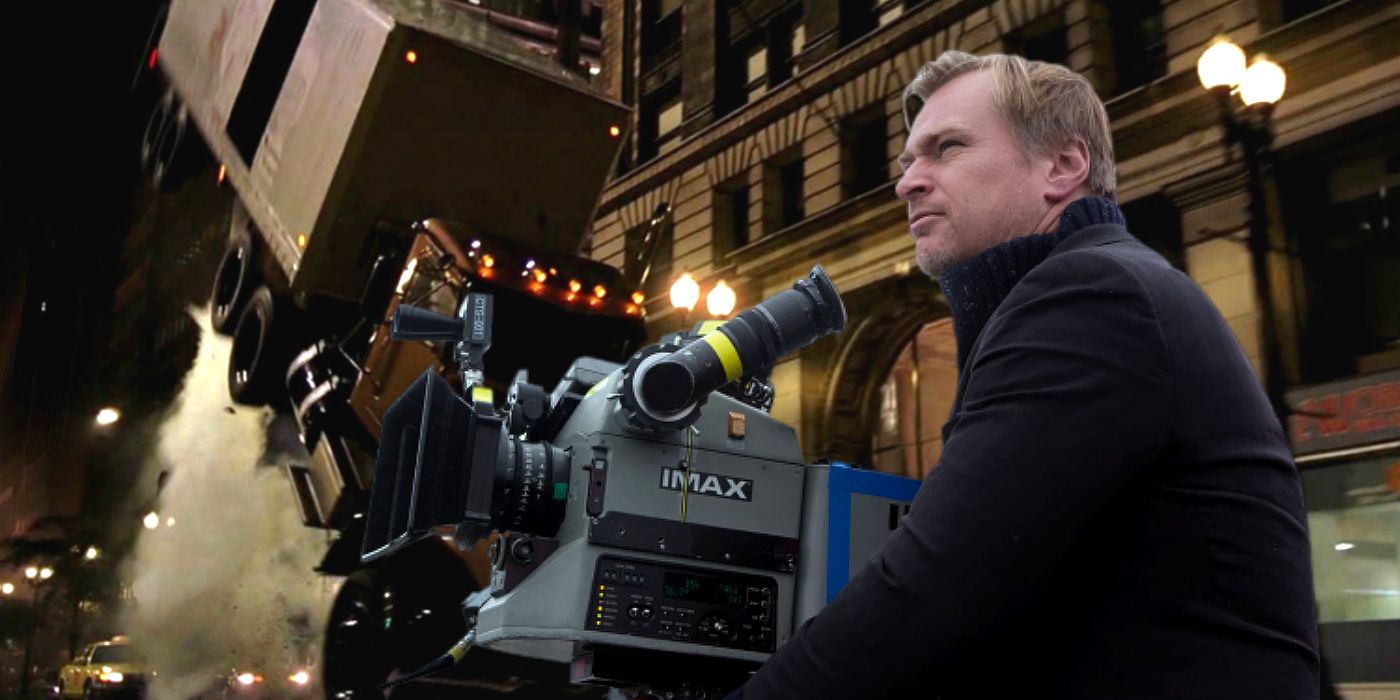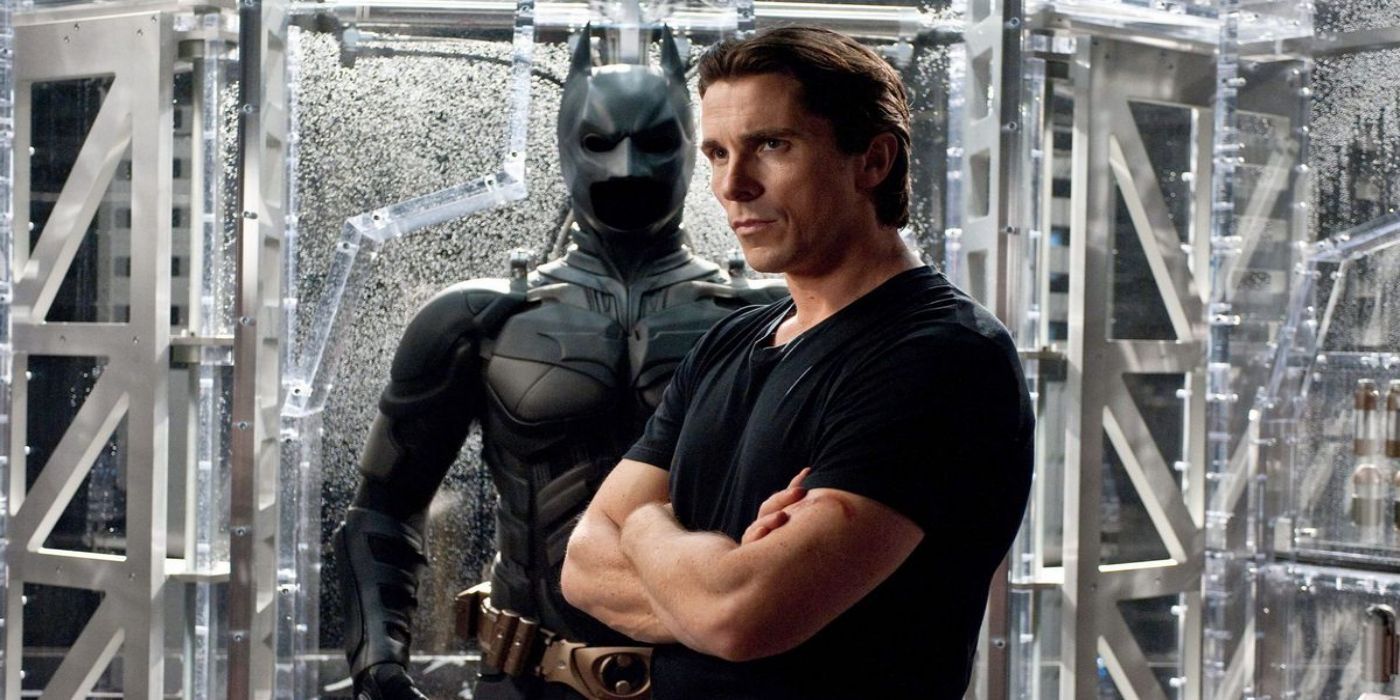Christopher Nolan confirms that he will be using brand-new IMAX technology to bring his next movie to life. After the major critical and commercial success of Oppenheimer last year, the Internet has been awash with rumors, reports, and speculation regarding Nolan’s next project, which still doesn’t have an official plot synopsis or premise. What is known is that the film will star Tom Holland, Matt Damon, Zendaya, Anne Hathaway, Robert Pattinson, Lupita Nyong’o, and Charlize Theron, and that it’s expected to release in July 2026.
During a recent interview with Associated Press News, Nolan confirms that he’s currently testing new film technology with IMAX that he will be using to shoot his next project. Though he doesn’t reveal any story information about the film, he does tease that the engineers at IMAX are pushing some impressive technological boundaries when it comes to the art of movie-making. Check out Nolan’s comment below:
“They have an incredible engineering staff, really brilliant minds doing extraordinary work. It’s wonderful to see innovation in the celluloid film arena still happening and happening at the highest level possible.”
What Nolan’s IMAX Confirmation Means For His Next Movie
Oppenheimer Was A Major IMAX Success
Nolan has a long working relationship with IMAX, and he’s now employed the technology on the majority of his films. Though IMAX is most often associated with more action-oriented blockbusters, Nolan used the technology in a novel way with his critically-acclaimed Oppenheimer, a historical drama that mostly consists of characters talking in rooms. The aspect ratio, resolution, and sound that IMAX provides is unparalleled in the theatrical space, and Nolan used it in his biopic to provide a better window into J. Robert Oppenheimer’s (Cillian Murphy) life.

Related
Every Movie Christopher Nolan Has Broken An IMAX Camera
Christopher Nolan revolutionized cinema with IMAX cameras, but it wasn’t without trial and error, as he’s broken the rare equipment three times.
Clearly, Nolan’s approach worked. Oppenheimer could only be played in the IMAX 70mm format in 30 theaters worldwide, and most were fully sold out for weeks following the movie’s release. Per Variety, IMAX accounted for 20% of the film’s $180.4 million opening weekend, with the format pulling in $17 million over the movie’s first three weeks of availability, an impressive figure. Nolan and IMAX are now linked in many ways, and Oppenheimer‘s performance suggests that there will be a major demand to see his next movie in this format.
Oppenheimer
grossed a total of $975 million worldwide, an astonishing figure for a three-hour, R-rated historical drama.
Our Take On Nolan’s IMAX Tease
Nobody Uses IMAX Like Nolan
One of the reasons why IMAX isn’t more widely used is that it’s both more expensive than shooting on digital and more inconvenient. IMAX cameras are large, loud, and heavy, making them challenging to use for dialogue-heavy scenes, as Nolan did on Oppenheimer, but also a challenge for more dynamic sequences. The hassle and the expense are worth it, however, considering what ends up on the big screen, and Nolan’s movies continue to utilize IMAX technology in a manner essentially unmatched by other Hollywood filmmakers.
Most innovations seem to be focused on making the cameras smaller, lighter, and quieter, meaning they can be used in a greater variety of situations.
It’s still unclear what exactly Nolan’s next movie will actually be about, but IMAX will give it a sense of epic grandeur no matter the genre and subject matter. As far as how IMAX technology will continue to evolve, most innovations seem to be focused on making the cameras smaller, lighter, and quieter, meaning they can be used in a greater variety of situations. More about Nolan’s next movie will surely be revealed over the coming months, but the project is shaping up to be just as epic as expected.
Nolan’s History Of IMAX Innovation Explained
The Director Has Been Testing New IMAX Tech Since 2008
Renowned for his visionary blockbusters like Inception, Interstellar, and Dunkirk, Nolan has been a trailblazer in IMAX filming technology since the earlier days of his career. In 2008, he broke new ground with The Dark Knight, which was the first major motion picture to be filmed with high-resolution IMAX cameras, technology that was previously used only for documentaries. Despite Warner Bros.’ initial concerns about the size, complexity, and cost of using IMAX cameras, Nolan believed in the technology and insisted it was necessary to achieve the expansive scale required for the film.
|
Christopher Nolan Movie |
Year |
|
Following |
1998 |
|
Memento |
2000 |
|
Insomnia |
2002 |
|
Batman Begins |
2005 |
|
The Prestige |
2006 |
|
The Dark Knight |
2008 |
|
Inception |
2010 |
|
The Dark Knight Rises |
2012 |
|
Interstellar |
2014 |
|
Dunkirk |
2017 |
|
Tenet |
2020 |
|
Oppenheimer |
2023 |
Since The Dark Knight, Nolan has remained at the forefront of advancements in IMAX technology. For instance, Oppenheimer was the first movie ever shot on black-and-white IMAX film, which Kodak and FotoKem created and developed specifically for Nolan’s film. Beyond his technical achievements, Nolan has also been a vocal advocate for the IMAX theater experience, urging audiences to see Oppenheimer specifically in IMAX 70mm, which he considers the highest-quality imaging format ever devised.
Though details about Nolan’s next project remain unknown beyond its star-studded cast, the director will once again be innovating new IMAX filming technology. Again, it’s unknown what the technology actually is, though Nolan’s tease is still tantalizing. Whatever the technology is, and whatever Nolan‘s next movie is about, it should certainly be another must-see cinematic event that redefines the very potential of the IMAX experience.
Nolan’s next movie is scheduled for release on July 17, 2026.
Source: Associated Press News

Christopher Nolan
- Birthdate
- July 30, 1970
- Birthplace
- Westminster, London, England, UK
Source link



















Add Comment